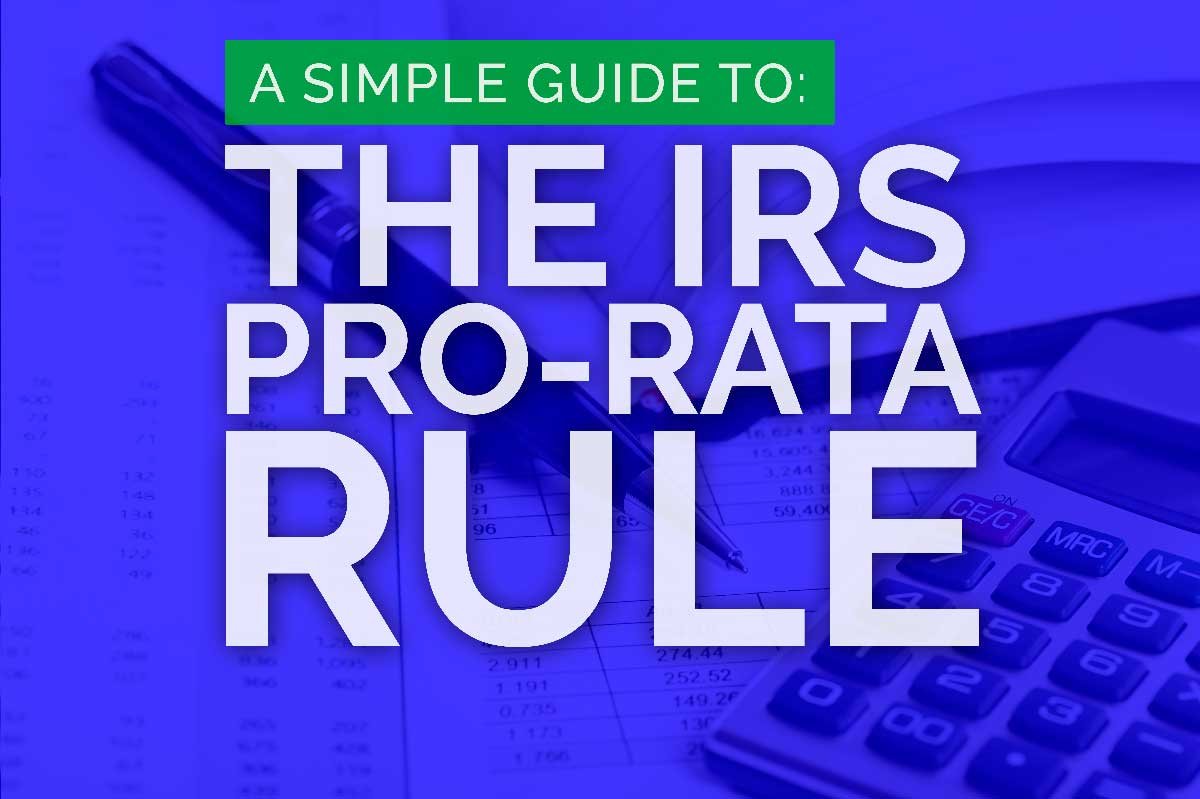Table of Contents
If you’ve ever dealt with taxes involving rental properties, stock sales, or partnerships, chances are you’ve come across the term “IRS pro-rata rule.” But what exactly is it, and why is it so important for accurate tax calculations? The IRS pro-rata rule fairly distributes taxes, deductions, or income across time periods, individuals, or other entities using a tax allocation method.
Understanding this rule is crucial if you want to make accurate tax calculations, avoid penalties, and minimize confusion during tax season. Common situations where you’ll encounter the pro-rata rule include property tax allocations for rental properties, calculating the cost basis for stock sales, and dividing income and deductions in business partnerships. This guide will walk you through everything you need to know about the pro-rata rule, from how it works to step-by-step instructions on calculating your taxes.
Understanding the IRS Pro-Rata Rule
The pro-rata rule sounds complex, but at its core, it’s about fair distribution. “Pro-rata” essentially means “in proportion.” The IRS uses this concept to allocate taxes, deductions, and income based on relevant factors like time, ownership percentage, or other measurable elements.
What Does Pro-Rata Allocation Mean?
Imagine splitting a pizza among friends based on how much each contributed to its cost. If three people paid varying amounts, each would get a slice proportionate to their contribution. That’s a simplified version of the pro-rata rule in action. In tax terms, it ensures everyone receives their fair share—or pays their fair share—based on measurable criteria.
Real-World Example
Consider a rental property sale. Suppose you sold a rental property on September 15th. The pro-rata rule determines how much of the annual property taxes you (the seller) and the buyer are responsible for. The allocation is based on how long each of you owned the property during the tax year.
Key Factors That Influence Pro-Rata Calculations
Several factors can affect pro-rata calculations:
- Time Periods: The duration of ownership or use often influences how taxes or costs are allocated.
- Amounts: The total value or cost that needs distribution.
- Rates: Applicable tax rates or deduction percentages.
Common Scenarios Where the Pro-Rata Rule Applies
Rental Property Taxes
One of the most common applications of the pro-rata rule is in allocating property taxes between buyers and sellers during a sale. Here’s how it works:
How It’s Used
When you sell a rental property, the annual property taxes must be divided based on the date of sale. The IRS pro-rata rule ensures both parties are responsible for taxes proportionate to the period they owned the property.
Step-by-Step Guide on Calculating Pro-Rata Property Taxes
- Determine the Total Annual Tax Amount: Find out the total property taxes due for the year.
- Calculate Daily Tax Rate: Divide the total tax amount by 365 days.
- Calculate Seller’s Pro-Rata Share: Multiply the daily tax rate by the number of days you owned the property.
- Calculate Buyer’s Pro-Rata Share: Multiply the daily tax rate by the number of days the buyer will own the property.
Example: Suppose annual property taxes are $3,650, and the sale occurred on the 200th day of the year. The seller’s share is 200 days * ($3,650 / 365) = $2,000.
Pretty straightforward math, right?
Stock Sales
Pro-Rata Rule for Determining Cost Basis
The pro-rata rule determines the cost basis for stock sales when you sell only part of your holdings. As a result, this helps calculate capital gains taxes accurately.
Implications on Capital Gains Taxes
Taxpayers calculate capital gains based on the difference between the sale price and the pro-rata cost basis. This approach accurately determines tax liabilities based on how long the stocks were held and how much was sold.
Business Partnerships and S Corporations
Allocation of Income, Deductions, and Credits
The pro-rata rule allocates income, deductions, and credits among partners or shareholders based on their ownership percentage. This affects individual tax returns and overall tax liability.
Impact on Individual Tax Returns
Each partner’s or shareholder’s taxable income reflects their share of the entity’s total taxable income, as determined by the pro-rata rule.
How to Calculate Pro-Rata Taxes
Step-by-Step Guide
It is not complicated to calculate pro-rata taxes. Follow these simple steps:
- Determine the Total Amount to Be Allocated: Identify the total tax, deduction, or income that needs to be distributed.
- Calculate the Pro-Rata Share for Each Period or Entity: Use relevant factors (time, percentage ownership, etc.) to determine each party’s share.
- Allocate the Total Amount Based on Pro-Rata Shares: Distribute the amount proportionally.
Common Mistakes to Avoid
Calculating pro-rata taxes can be tricky, and errors often arise. Here’s what to watch out for:
- Ignoring Time Periods: Make sure to consider how long each party held the asset or was subject to the tax.
- Incorrect Data: Double-check property tax rates, ownership percentages, or any other figures used in your calculations.
- Overlooking Deductions: Some tax allocations allow for deductions—be aware of these and apply them correctly.
Tips for Accurate Calculations
- Use Software: Tax software often includes pro-rata calculations, reducing errors.
- Consult IRS Publications: The IRS provides guidelines and examples that can help clarify your obligations.
- Seek Professional Advice: For complex situations, consulting a tax professional ensures accuracy.
Conclusion
The IRS pro-rata rule plays a crucial role in fairly distributing taxes, deductions, and income among individuals or entities. From rental properties and stock sales to business partnerships, understanding this rule can help you make accurate tax calculations and minimize potential liabilities. Remember, calculating pro-rata taxes accurately involves understanding the total amounts to be allocated, determining each party’s share, and applying these proportions correctly.
If you find yourself in complex tax situations or need further clarification don’t hesitate to seek professional advice. There are also plenty of resources, such as IRS publications and tax software, that can provide additional guidance. Mastering the pro-rata rule may seem challenging at first, however it can save you from costly errors and ensure fair and accurate tax calculations.


